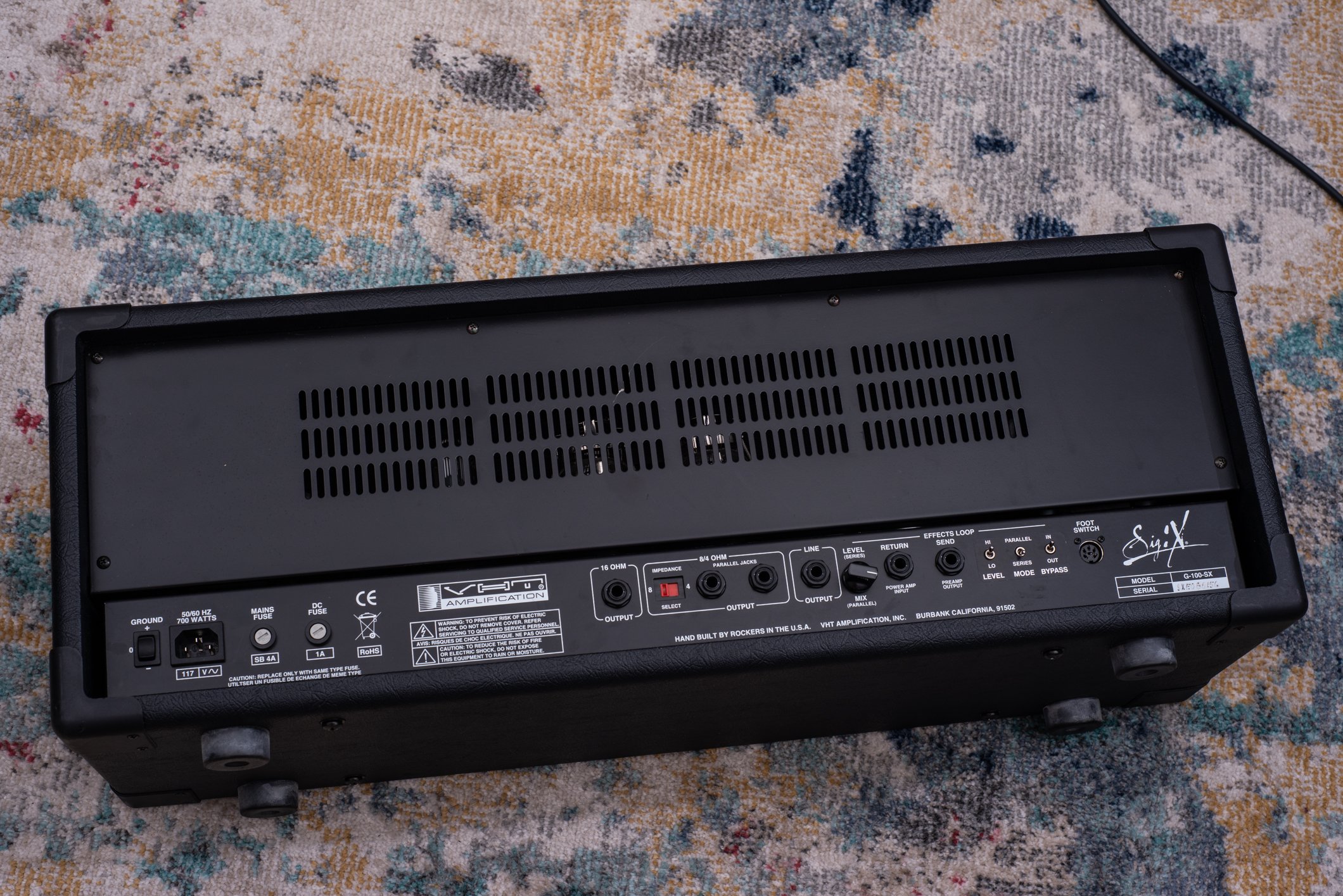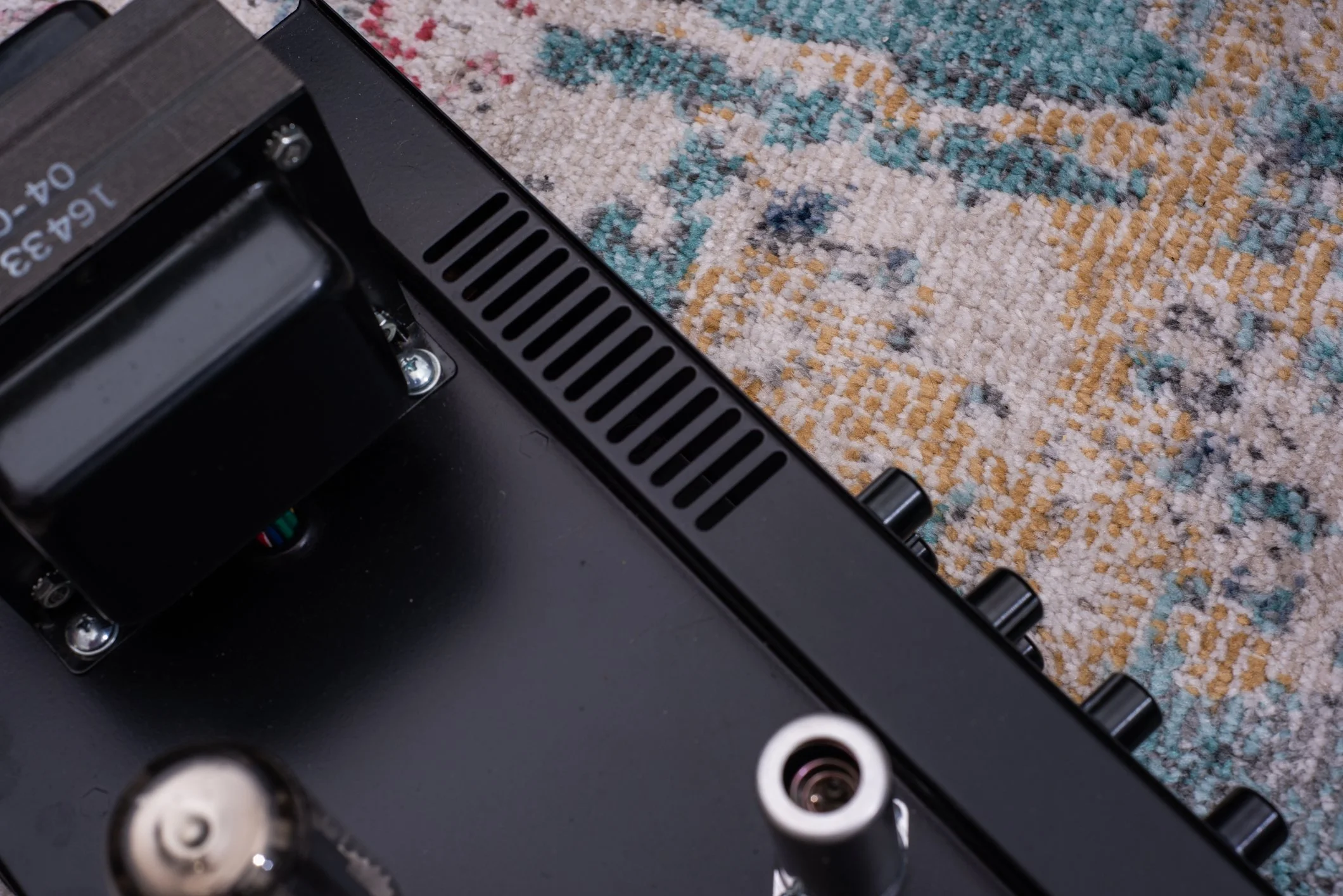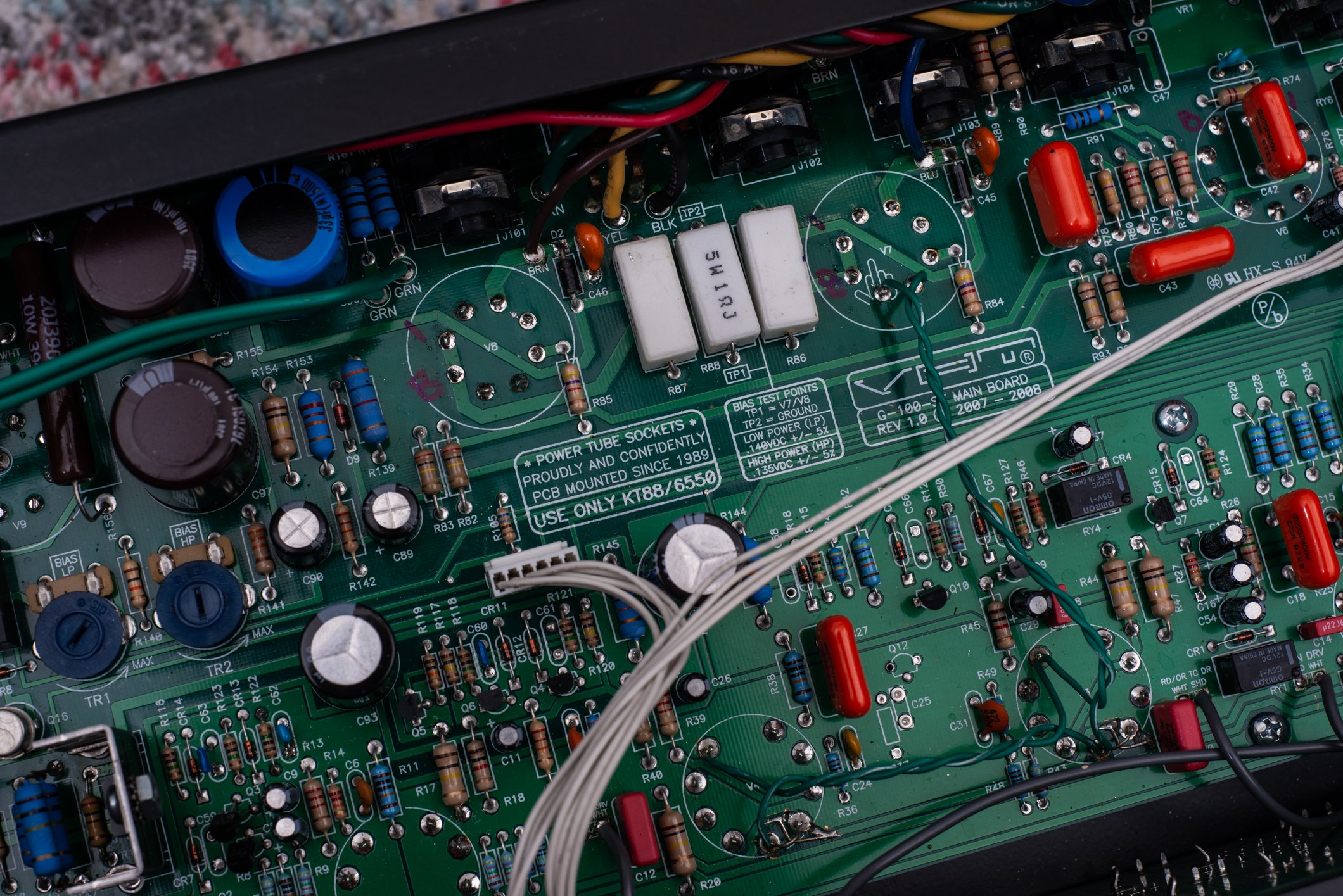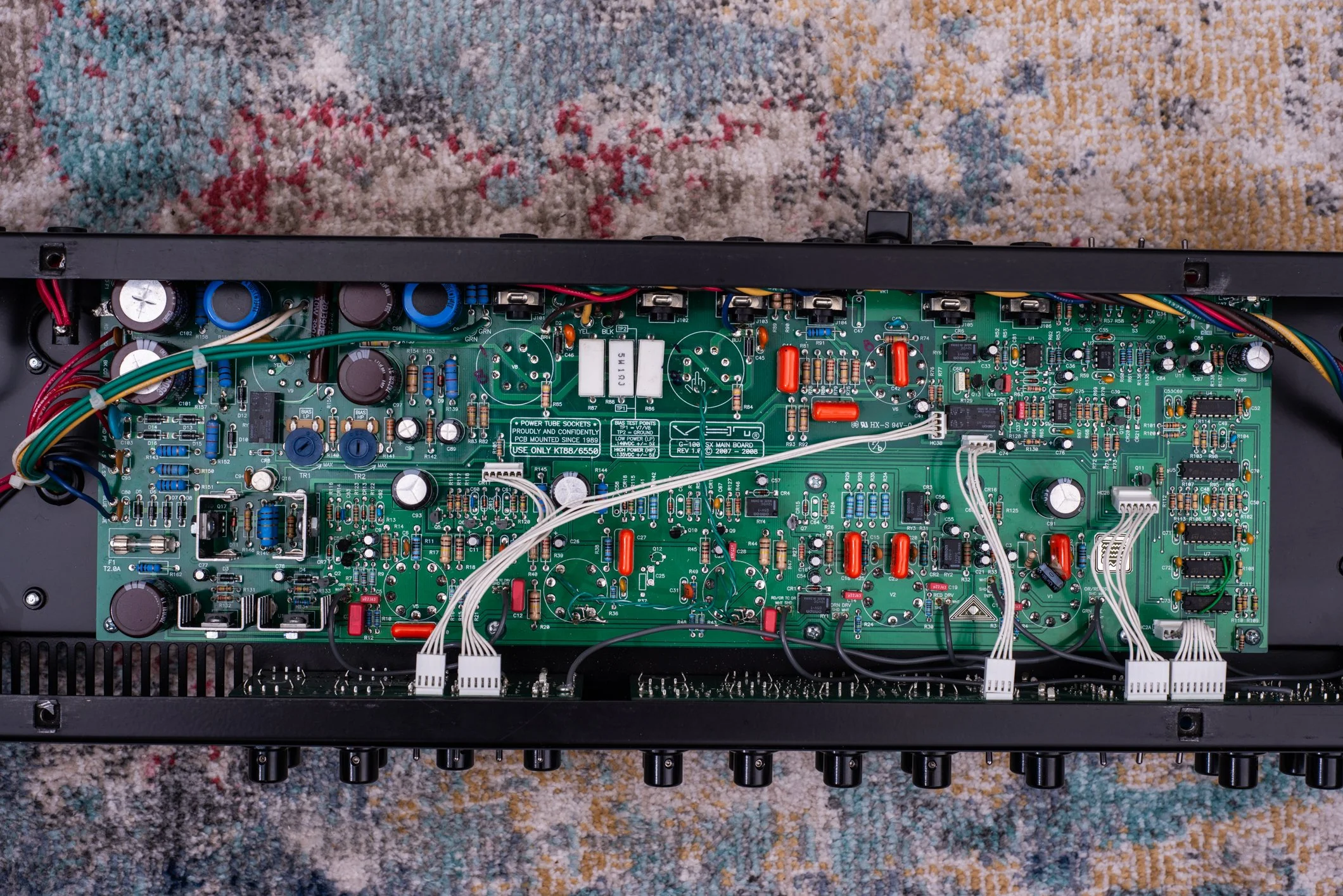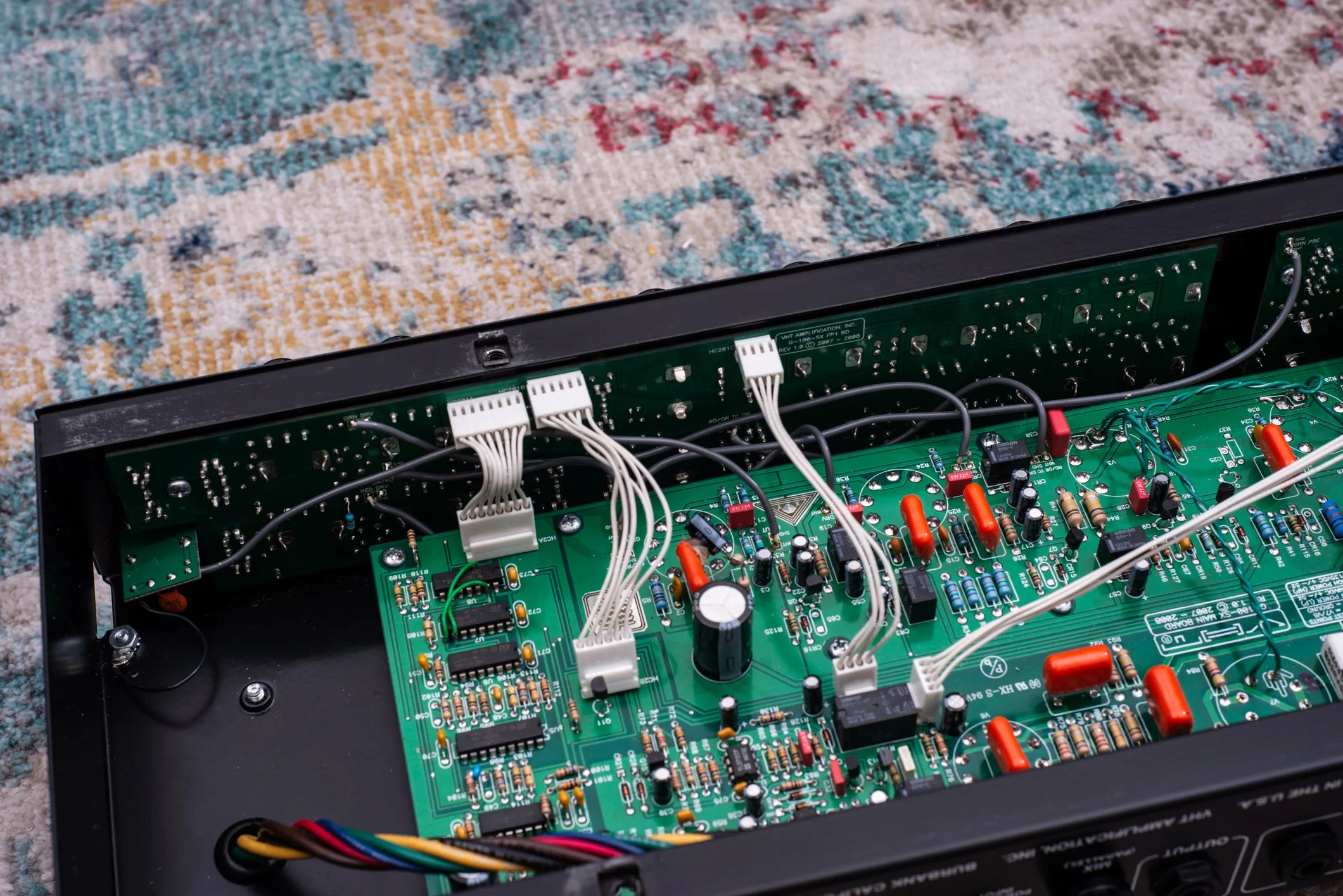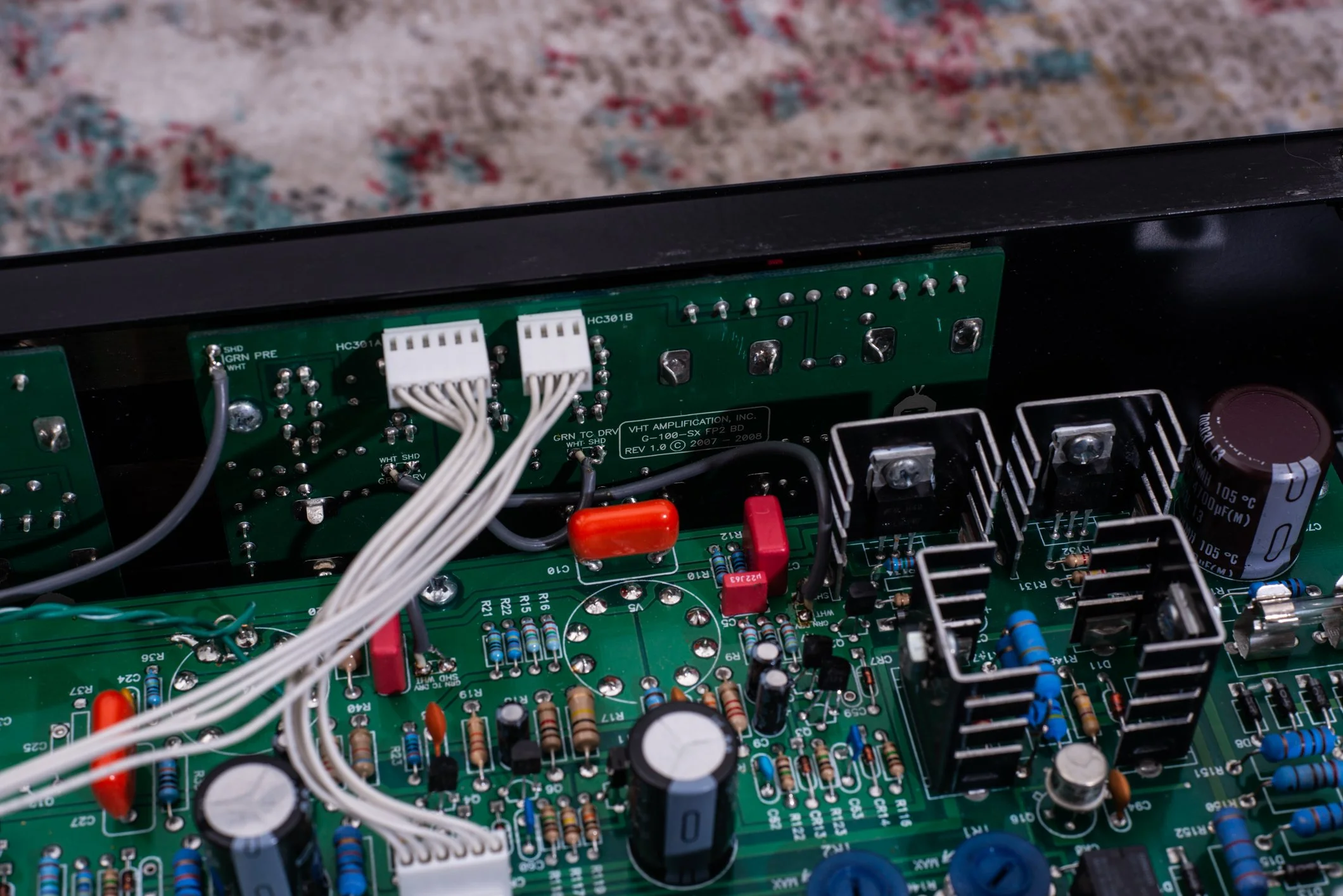2008 VHT G100SX Sig:X
Specs
3 Channels
120w Output
2x KT88/6550 Power Tubes
6x 12AX7 Preamp tubes
1x 5U4 Tube Rectifer
Serial effects loop
Direct line output
3 voices/modes per channel
Switchable EQ voicing per channel
Switchable 100w/40w per channel
Switchable gain boost per channel, adjustable amount on rhythm and lead channels
More/Less gain switch on rhythm and lead channels
Burbank, CA Era
$1999 in 2008
Overview
I had the rare opportunity to play this amp once in a Guitar Center sometime around 2009. In another not-uncommon story on this site, I didn’t really know how to dial it, but I was really impressed with its gain sounds and the idea of “my own signature sound” with all of the switches and versatility put this amp at the top of my list, but I just couldn’t afford it back then. Fast forward about 15 years, and I finally got my hands on one. At the time, I remember thinking there was no rush, because an amp this great will set like crazy and they’ll be all over the place… well I was wrong. I’m not sure if the people who have them, just love them and won’t let them go, or if they just didn’t move the kind of units the expected, but they are pretty hard to find these days. I suppose other amps near the same price at the time, like the Marshall JVM410 or Mesa Mark V kind of stole the thunder.
I consider myself a pretty big VHT/Fryette fan, even though I only have 3 at the time of writing (including this amp), and I’d love to get a few more. I’m so thrilled by the sounds I get out of my Pittbulls, so I fully expected this amp to blow me away, and I’m happy to say it’s an incredible amp. It has 3 channels, each with 3 modes, and a 100w/40w switch. When the amp is in 40w mode, it is also using the 5U4 tube rectifier, but in 100w it’s using a silicon solid state rectifier for more punch and volume. In addition, each channel has its own boost function, which is fixed on the clean channel but adjustable on the drive channels, and an “EQ” switch that changes how the 3-band EQ is shelved. Further than that, the two drive channels have a “more/less” gain switch, similar to my Pittbull CL, which adds an additional tube gain stage independent of the boost.
The plethora of tones is nothing short of mind boggling, and I think one of the best things about this amp is that it achieved its goal - it is not a replication of your favorite tones from other amps. If you’re looking for your own “signature” sound with this unique Fryette style to it, this pulls it off perfectly. Both gain channels can be dialed to be extremely similar, or so different it sounds like different amps. I find I like to get them pretty close, with a tad more gain and treble on the lead channel, but flip that more/less gain switch and you can set one for crunch and keep your high gain lead sound, or roll down the amount of boost to achieve a similar outcome. The boost is also footswitchable, which would be great if I had the footswitch or could get my hands on one. The wood/scoop switch for the EQ has a very noticeable effect on the tone, depending on how you have your 3-band EQ set, especially the middle control. The only thing I think might surprise people is that the 3 “modes” are not all that different sounding to my ear, with a hair more gain and slightly more defined low end going up to more aggressive settings (Blow and Burn, respectively). It contrasts a bit with the other toggle switches that have a stronger effect.
The clean channel modes on the other hand are much more noticeable, and can be used to tailor your preferred clean sound from a scooped, bright rhythm right up to a mid-heavy one - especially combined with the fat/open EQ switch. This channel does not have a gain control, although it does have a footswitchable boost. This boost can’t be adjusted, but it’s intelligently placed to add some volume and the tiniest hint of dirt, so it’s very usable. Of course, even on 40w mode, the amp has to be deafeningly loud to get much dirt out of this channel, so it makes for a great platform for pedals and effects.
It’s a tough call, but I think I still prefer the Pittbull by a hair, but that’s a hard amp to dethrone for me, and it’s way less versatile for sure. The Sig:X really impresses even after all of these years and my only regret is that I didn’t get one sooner.





